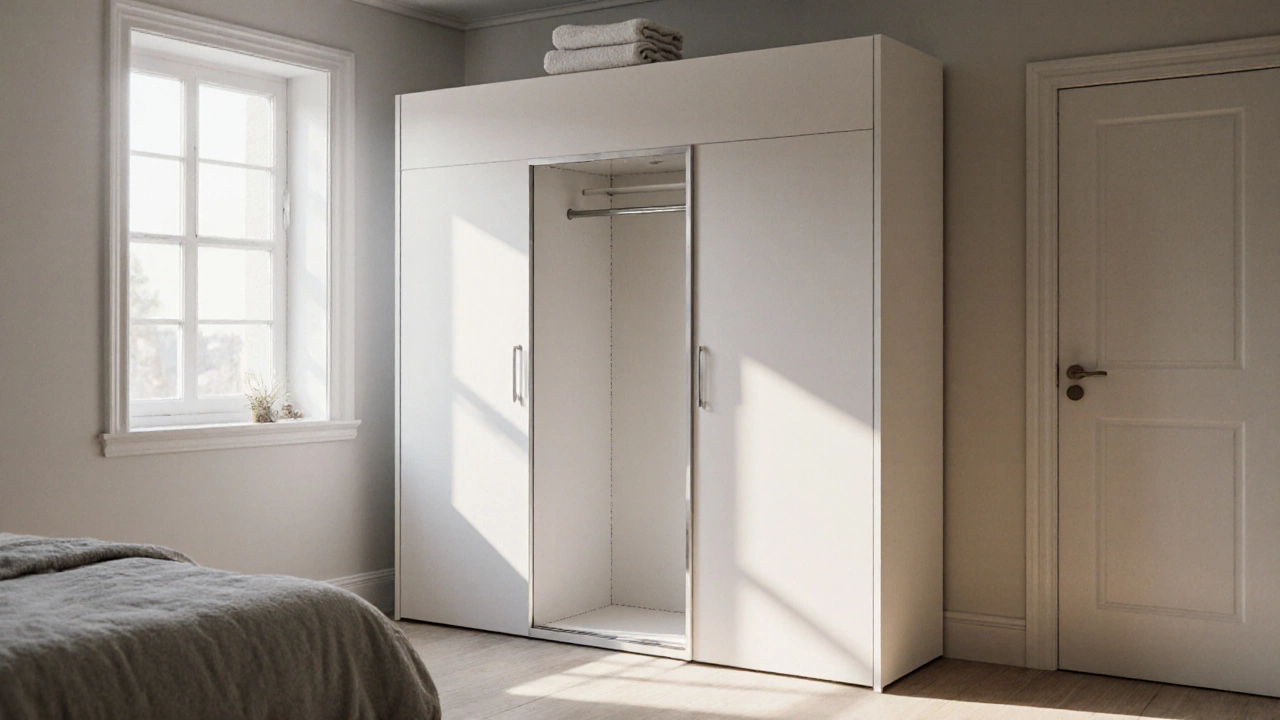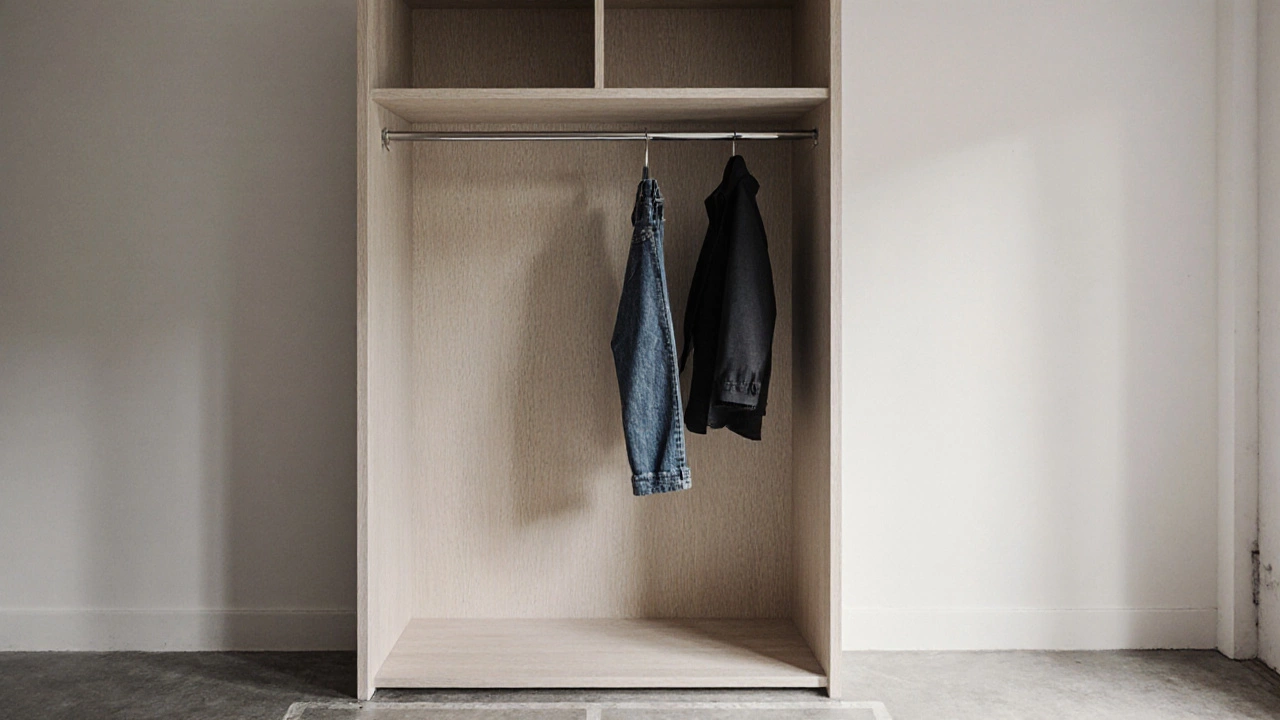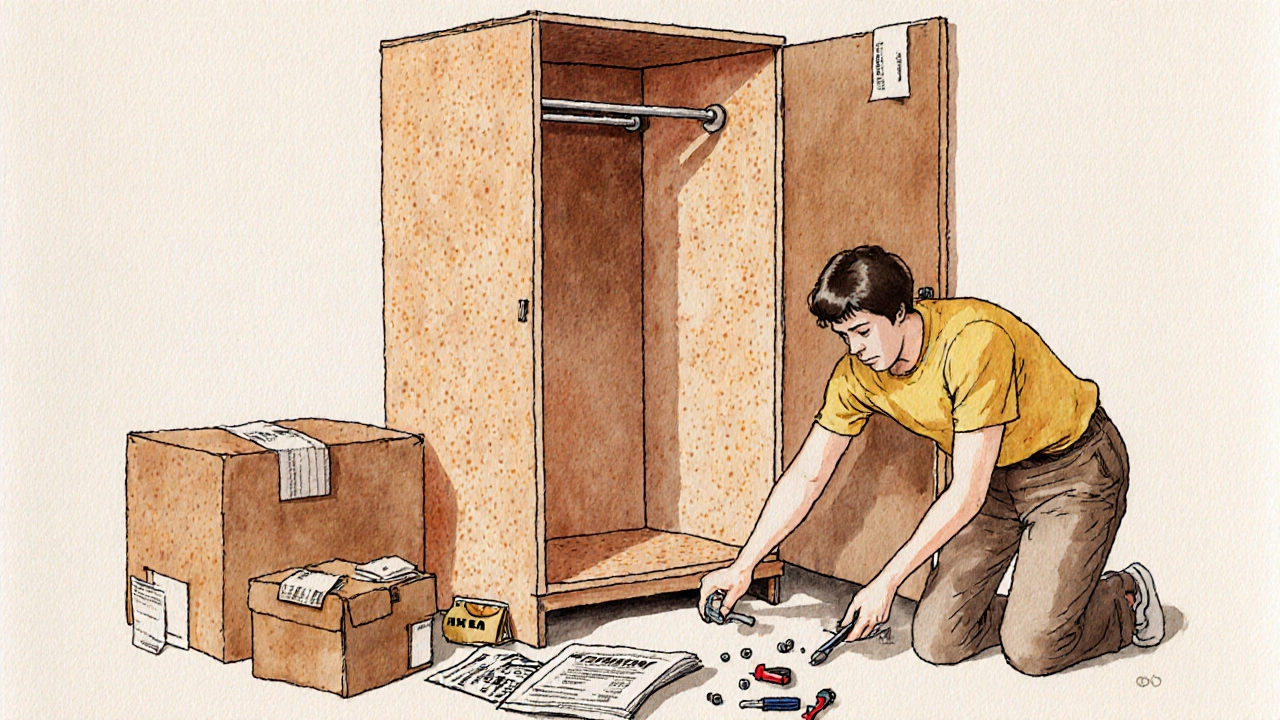
Based on 2024 market data for basic wardrobes under $100
When you walk into a bedroom and see a tall, plain cabinet with a rod inside for hanging clothes, you don’t need a fancy name for it. But if someone asks, what do you call a basic wardrobe? - the answer isn’t always obvious. People use different words depending on where they live, how old the furniture is, or just how they learned to talk about storage. The truth is, there’s no single official term - but there are clear, common names that actually get used in homes, stores, and real-life conversations.
In everyday speech, the simplest and most widely understood name is just wardrobe. That’s it. No extra words. A wardrobe is a freestanding cabinet with doors, a hanging rod, and sometimes shelves or drawers. You don’t need to say "closet" or "closet unit" unless you’re comparing it to something built into the wall. In the UK, Australia, and parts of Canada, people say "wardrobe" without hesitation. In the U.S., you might hear "closet" more often - but that usually means a built-in space, not a piece of furniture.
So if you’re looking at a standalone unit with two doors, a metal rod, and maybe a few shelves inside, you’re looking at a wardrobe. That’s the term used by furniture stores like IKEA, Wayfair, and Ashley. If you search for "basic wardrobe" online, you’ll see hundreds of results for exactly this kind of item - no frills, no mirrors, no drawers, just hanging space.
The confusion comes from mixing up two different things: built-in closets and freestanding units. A built-in closet is part of the house - it’s framed into the wall, has a door you swing open, and is usually lined with shelves and rods. That’s not a wardrobe. A wardrobe is something you buy, move, and assemble yourself. It’s furniture, not architecture.
Many Americans call their built-in closet a "wardrobe" by mistake. You’ll hear someone say, "I need more space in my wardrobe," when they really mean their walk-in closet. That’s a language mix-up, not a technical error. But if you’re shopping for furniture, you need to know the difference. If you’re buying a wardrobe, you’re getting a portable piece that fits in a corner. If you’re remodeling, you’re talking about a built-in closet.
Depending on where you are or who you talk to, you might hear other terms for a basic wardrobe:
So while "closet unit" and "clothes cabinet" are technically correct, they’re not what most people say at home. "Wardrobe" still wins.

A basic wardrobe has three things:
That’s it. No drawers. No mirrors. No lighting. No fancy finishes. No shelves unless they’re simple and removable. You can find these for under $100 at discount stores like Walmart or Target. They’re the kind you assemble yourself with a screwdriver and a few Allen keys.
Compare that to a high-end wardrobe: built-in cabinetry, soft-close hinges, pull-out drawers, LED lights, and full-length mirrors. Those are luxury items. A basic wardrobe is what you get when you just need to hang your clothes and keep them out of the way.
You don’t need a big closet to need a wardrobe. Here’s when a simple one makes sense:
Many college students buy one of these when they move into their first apartment. It’s the first piece of furniture they get that’s not a bed or a desk. It’s practical, easy to clean, and doesn’t require tools to move.
Not all "basic" wardrobes are built the same. Here’s what to check before you buy:
Brands like IKEA’s KUNGSBACKA or Walmart’s SONOMA line are reliable for basic models. They’re not fancy, but they last 3-5 years with normal use.

If you’re talking to a friend, say wardrobe. It’s simple, understood, and doesn’t sound like you’re reading a manual.
If you’re shopping online or in a store, search for basic wardrobe or closet unit. Both will get you the right results. "Closet unit" is better if you’re avoiding confusion with built-ins.
And if someone asks you what you call it - just say, "It’s a wardrobe." No need to overthink it. That’s what it is.
There are a few myths about basic wardrobes that cause people to waste time or money:
Basic wardrobes aren’t fancy, but they’re not obsolete. They’re practical. They solve a real problem: where do you hang your clothes when you don’t have a closet?
No. A closet is built into the wall of your home - it’s part of the structure. A wardrobe is a freestanding piece of furniture you can move. If you bought it from a store and assembled it yourself, it’s a wardrobe.
An armoire is a type of wardrobe, but it’s more decorative. Armoires often have carved details, glass doors, or mirrors. A basic wardrobe is plain, functional, and usually made of inexpensive materials like MDF. If it looks like furniture from the 1800s, it’s probably an armoire.
Yes, if it’s well-made. Most basic wardrobes support 40-60 pounds of hanging weight. That’s enough for 15-20 heavy coats. Check the rod material - metal is better than plastic - and make sure the frame is sturdy. Avoid models that wobble when you open the door.
Not necessarily. A basic wardrobe is designed for hanging clothes. Shelves are optional. If you want to fold sweaters or store shoes, look for a model with one or two removable shelves. But don’t pay extra for shelves if you only hang clothes.
It depends on your space. Sliding doors save room because they don’t swing open. That’s great for small bedrooms or tight corners. Hinged doors give you full access to the inside and are easier to repair if they break. If you have at least 2 feet of clearance in front of the wardrobe, hinged doors work fine.
You don’t need a complex name for something this simple. A basic wardrobe is just a box with a rod and doors - and that’s exactly what makes it useful. It’s the quiet hero of small spaces. No one writes poems about it, but millions of people rely on it every day. If you’re looking for one, skip the jargon. Just search for "basic wardrobe," check the material and weight limit, and pick the one that fits your space and your budget. You’ll be done in ten minutes - and your clothes will thank you.
Write a comment